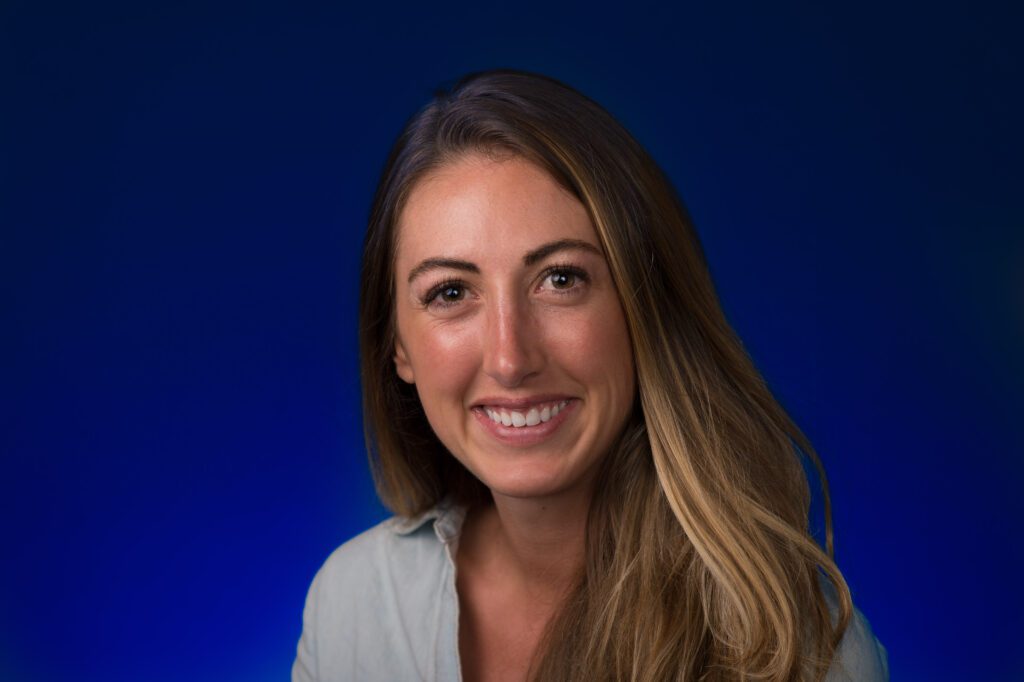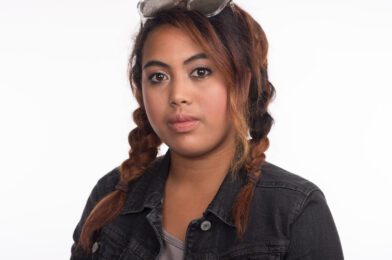| Nikon D5, Nikon 85mm ƒ/1.8G, ISO 100, ƒ/5.6, 1/200, 4–Alienbees B1600, Pocketwizards to trigger flashes |
I am teaching a lighting class in Kona, Hawaii, with the Youth With A Mission School of Photography class.
This is one of the lighting exercises I do each year. This is teaching the 3:1 Lighting Ratio. I showed the class the final photo and then walked them back through how to get this lighting. This is all done with a White Background. See below for the same example but with a Black Background.
Here is the setup that I used above. Here you can see one of the students later with the design we were using.
While we have all the lights in generally the places they will be at the end, I turn them all off except the leading light. The main light is 45º to the subject’s left and right of the camera and closest to the topic. Then I took a light reading and also set the white balance. The aperture was set to ƒ/5.6. Then I took this photo.

Then we turned this light off and turned the fill light on. This is the one closest to the camera. Ideally, it would be right behind the camera, but I put it a little off to the side so I am not blocking the light while operating the camera.
I set the light to be one stop less than the leading light. The light was developed to give me ƒ/4, but I kept the camera set to ƒ/5.6, which meant the photo would be underexposed by one stop.
Here is this photo with the same settings as the leading light.
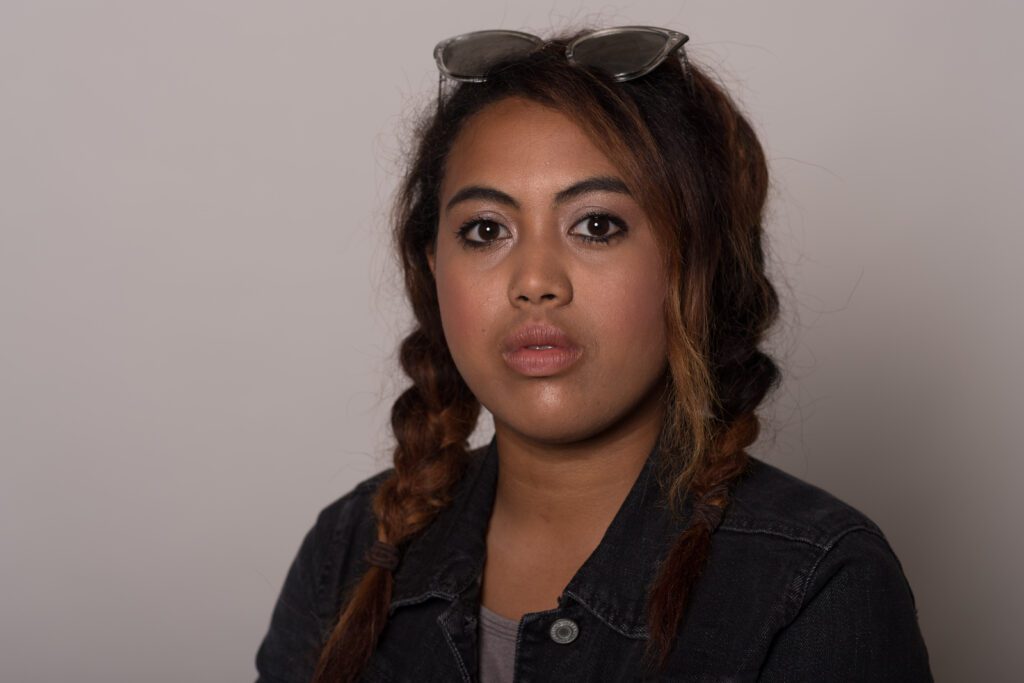
Next, we turned both lights on and double-checked the exposure with a light meter which still was ƒ/5.6. It might have been a 1/10th of a stop brighter, but we kept the camera set to ƒ/5.6.
Here is the combined light photo.
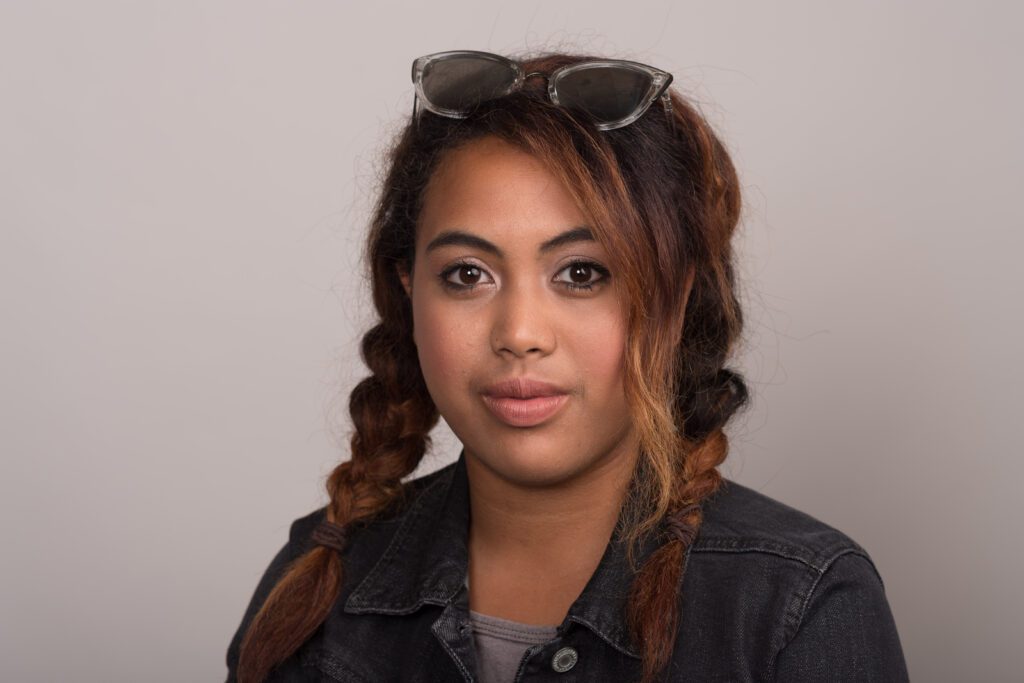
Lastly, I turned two more lights on that are hitting the background and trying to get an even light across. I made this light just one stop brighter than the leading light of ƒ/5.6, so this light was set to ƒ/8. Here is this photo.
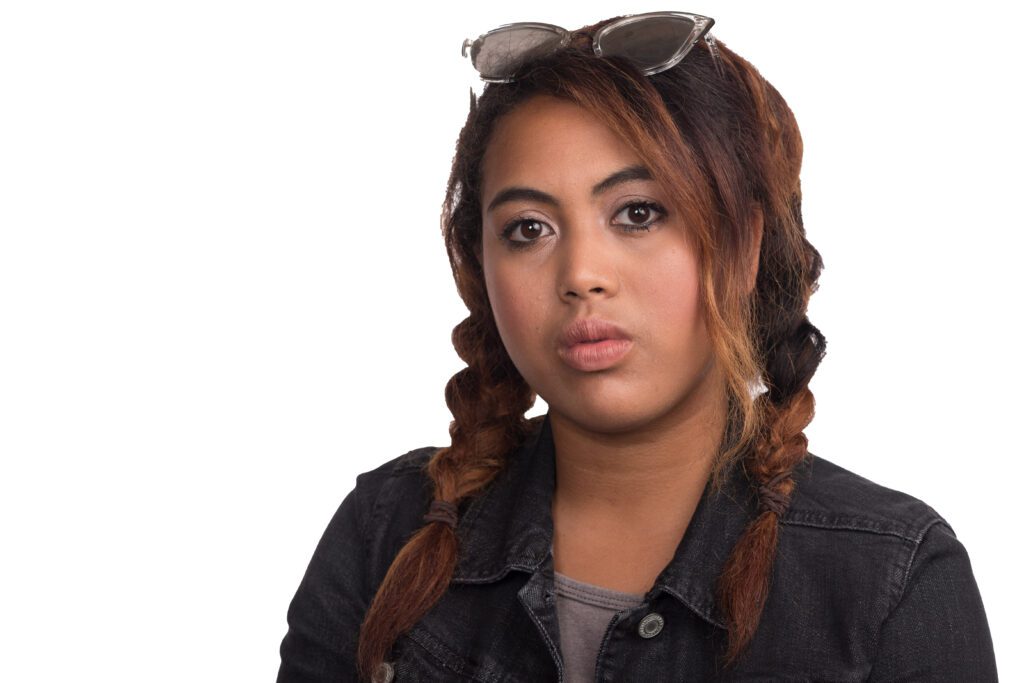
I hope you enjoyed this step-by-step tutorial on how to shoot a 3:1 Lighting Ratio portrait.
This is the same exercise using a black background. Now, you need to understand that the 3:1 lighting ratio allows this photo to be used in many places. The one thing is where it looks the best in a Newspaper compared to another lighting which can make those shadows lose all detail and go pitch black. This allows you to see some modeling of the light to highlight the cheekbones and contours of the face without overdoing it and creating a photo with too much contrast.
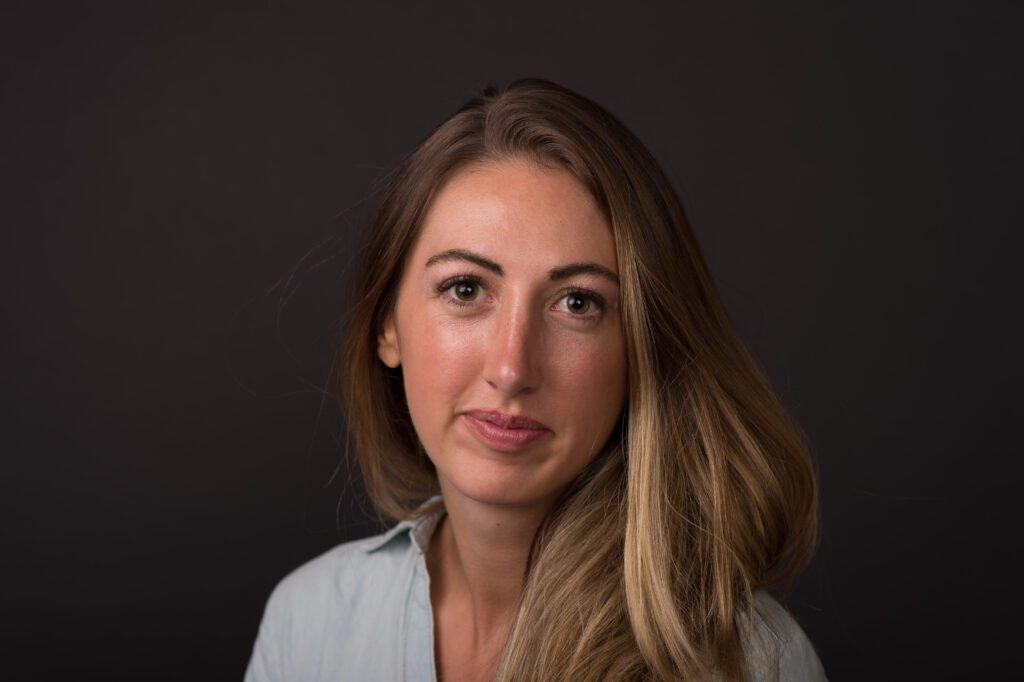
Here is the setup

Assignment Description:
3:1 lighting ratio. This photo is classic lighting.
Items:
Octobox closest to subject
This light is your main light. Get a light reading with just this first. The light should be 45 degrees off the axis of the camera and 45 degrees above the subjects eyes.
Subject
Your subject should have the main light lighting only part of the face and the shadows should be just a little to show the 3:1 ratio.
(D)SLR
Choose the lowest ISO. Ideally on full-frame camera a lens close to 85mm and on cropped sensor a 50mm. Set your shutter speed to the sync speed for your camera [in your camera manual] or slower. My camera was 1/250 but I shot at a slower speed of 1/200.
Octobox behind the camera
This is your fill light and get just a reading of this 2nd. Be sure it is 1/2 the power (1 f/stop less) than the main light. After this is done get a 3rd light reading of both lights which will be the setting for the camera. It can be level with the eyes, but you may have to move up with glasses to avoid glare.
First set the main light and here is what that will look like:
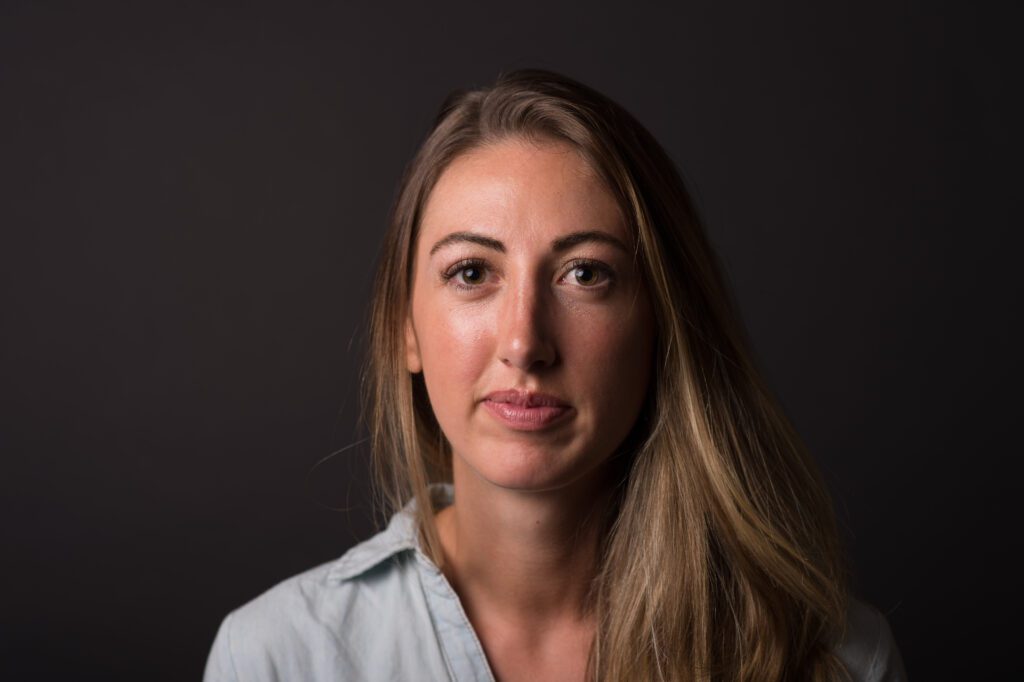
Due to using such a giant softbox, the shadows are not as severe as in our first assignment using the grid light. Some light bounces off a white wall a few feet to the model’s left or right of the camera position.
Turning the leading light off after finding out your setting, you need to take a reading and get the fill light to 1 stop less than the main light. The leading light was ƒ/4, so the fill light should read ƒ/2.8.
This is what it looks like without the leading light on. You can see a little darker, but no accurate face shaping as the leading light is 45º to the side.
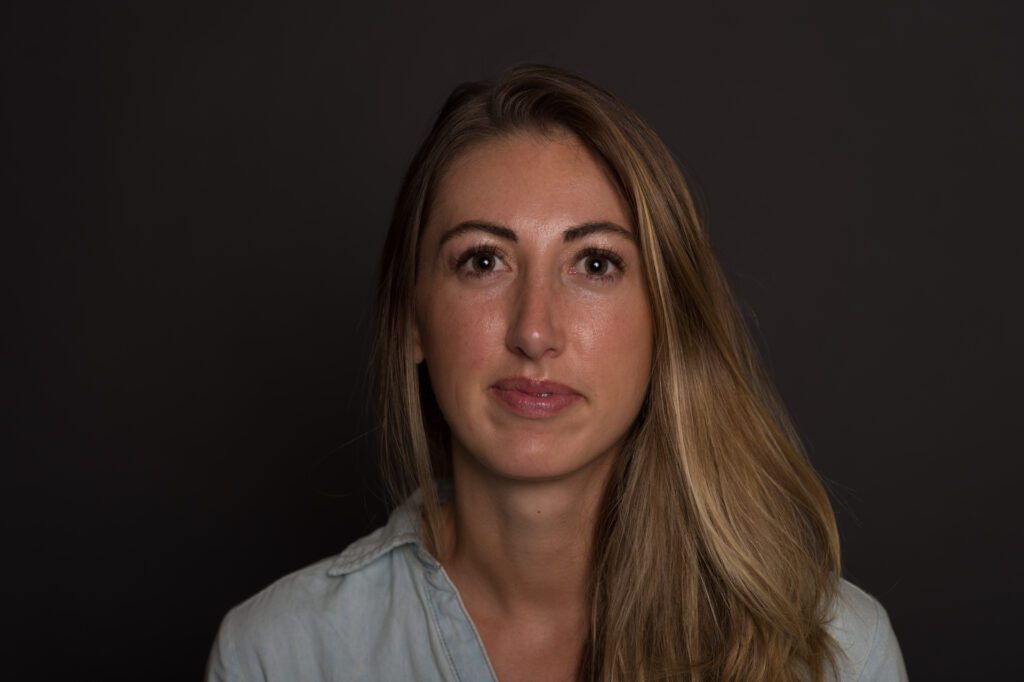
When you combine them, you get the first photo of the model we started with.
The leading light is twice as bright as the fill light. So to show this using math, we would say the leading light has a value of 2, and the fill light has the value of 1.
Where both the main and fill light fall on the face is getting the combined value of the 2 + 1 = 3. However, in the shadows, only the fill light is hitting those; therefore, the discount is only 1.
So the bright areas get three, and the shadows 1 give you a 3:1 lighting ratio.
Now I showed the students how they could add a background light. I put a blue gel over it to show them they can also color the background.
